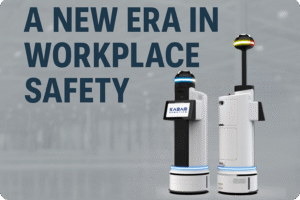A New Era in Workplace Safety
Workplace injuries don’t just impact the people involved—they affect team morale, productivity, and a company’s bottom line. From heavy lifting and repetitive strain to exposure to hazardous chemicals, many essential tasks come with inherent risks.
Robotic technology is changing that. By taking on the most dangerous and physically demanding jobs, robots are helping companies create safer, healthier work environments where employees can focus on high-value, low-risk tasks.
1. Taking on Heavy Lifting and Transport
Manual material handling is one of the leading causes of workplace injuries, including strains, sprains, and back problems. Robots can:
-
Move heavy items across warehouses or construction sites
-
Transport linens, food trays, or medical supplies in hospitals and hotels
-
Reduce the need for employees to push, pull, or carry loads over long distances
By automating transport, staff avoid repetitive strain and injury, and fatigue levels drop significantly.
2. Handling Hazardous Cleaning Tasks
Some cleaning jobs put workers in contact with dangerous chemicals or environments. Robots help by:
-
Scrubbing floors with built-in chemical containment systems
-
Cleaning high-risk areas such as industrial kitchens, laboratories, or public restrooms
-
Operating in environments that require special protective equipment
This reduces chemical exposure, slip-and-fall risks, and the likelihood of accidents in high-traffic or hard-to-reach areas.
3. Managing Hazardous Materials Safely
In industries like manufacturing, healthcare, and logistics, employees may encounter hazardous substances. Robots can:
-
Transport biohazard waste in healthcare facilities
-
Move flammable or toxic materials in industrial settings
-
Work in high-temperature or contaminated environments without risk to human health
This not only protects employees but also ensures regulatory compliance and consistent safety standards.
4. Supporting Risk Reduction Strategies
Robots are more than just machines—they’re part of a comprehensive safety program. They:
-
Reduce repetitive motion injuries
-
Limit time spent in accident-prone areas
-
Provide consistent, predictable handling of tasks prone to human error
By combining automation with strong safety policies, businesses can drastically lower workplace injury rates.
The Bottom Line: People Come First
Robots aren’t here to replace your team—they’re here to protect them. By offloading the most dangerous jobs to machines designed for the task, companies create an environment where safety isn’t just a goal—it’s a guarantee.
In safer workplaces, employees can work with confidence, productivity stays high, and businesses thrive without compromising their people’s well-being.




